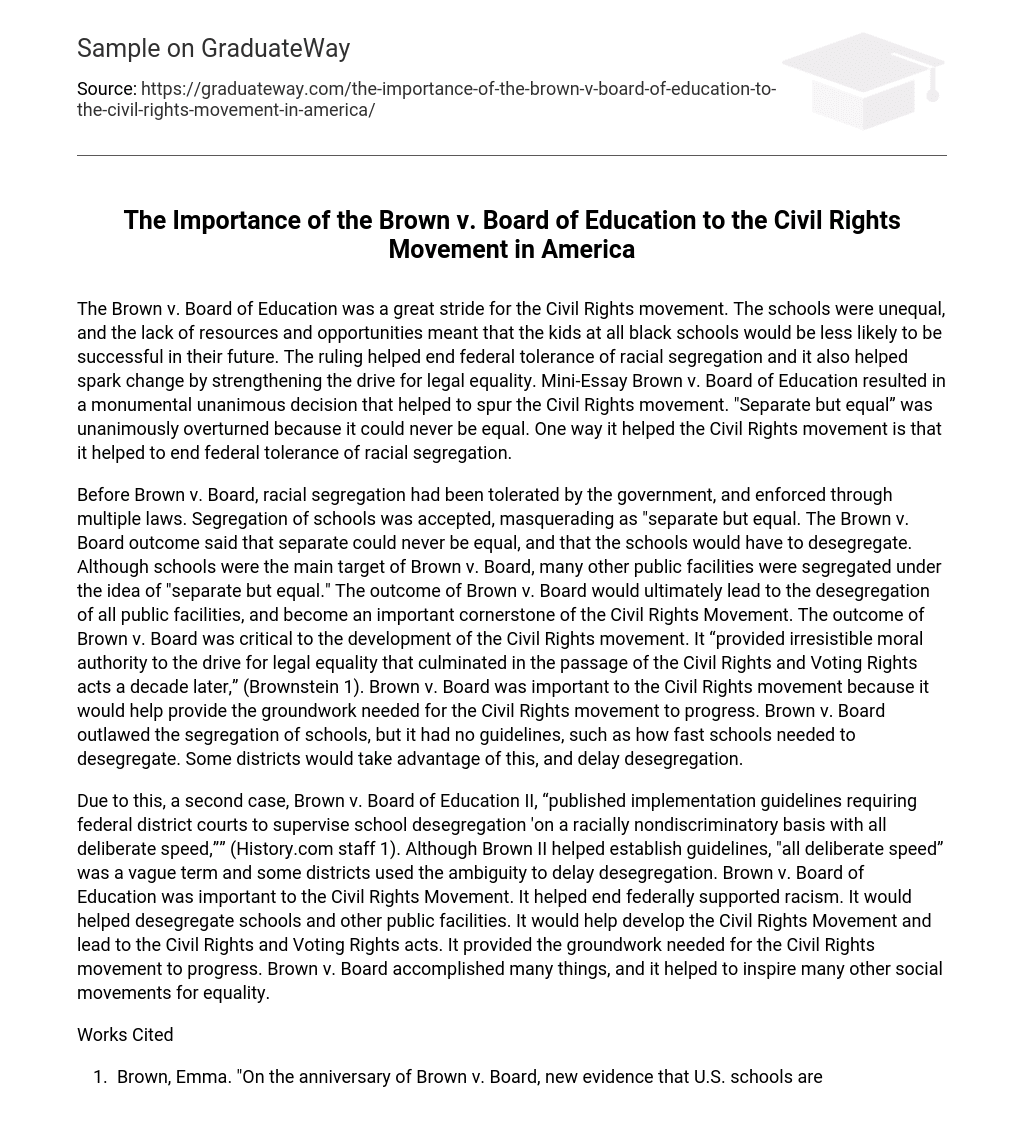The Brown v. Board of Education was a great stride for the Civil Rights movement. The schools were unequal, and the lack of resources and opportunities meant that the kids at all black schools would be less likely to be successful in their future. The ruling helped end federal tolerance of racial segregation and it also helped spark change by strengthening the drive for legal equality. Mini-Essay Brown v. Board of Education resulted in a monumental unanimous decision that helped to spur the Civil Rights movement. “Separate but equal” was unanimously overturned because it could never be equal. One way it helped the Civil Rights movement is that it helped to end federal tolerance of racial segregation.
Before Brown v. Board, racial segregation had been tolerated by the government, and enforced through multiple laws. Segregation of schools was accepted, masquerading as “separate but equal. The Brown v. Board outcome said that separate could never be equal, and that the schools would have to desegregate. Although schools were the main target of Brown v. Board, many other public facilities were segregated under the idea of “separate but equal.” The outcome of Brown v. Board would ultimately lead to the desegregation of all public facilities, and become an important cornerstone of the Civil Rights Movement. The outcome of Brown v. Board was critical to the development of the Civil Rights movement. It “provided irresistible moral authority to the drive for legal equality that culminated in the passage of the Civil Rights and Voting Rights acts a decade later,” (Brownstein 1). Brown v. Board was important to the Civil Rights movement because it would help provide the groundwork needed for the Civil Rights movement to progress. Brown v. Board outlawed the segregation of schools, but it had no guidelines, such as how fast schools needed to desegregate. Some districts would take advantage of this, and delay desegregation.
Due to this, a second case, Brown v. Board of Education II, “published implementation guidelines requiring federal district courts to supervise school desegregation ‘on a racially nondiscriminatory basis with all deliberate speed,”” (History.com staff 1). Although Brown II helped establish guidelines, “all deliberate speed” was a vague term and some districts used the ambiguity to delay desegregation. Brown v. Board of Education was important to the Civil Rights Movement. It helped end federally supported racism. It would helped desegregate schools and other public facilities. It would help develop the Civil Rights Movement and lead to the Civil Rights and Voting Rights acts. It provided the groundwork needed for the Civil Rights movement to progress. Brown v. Board accomplished many things, and it helped to inspire many other social movements for equality.
Works Cited
- Brown, Emma. “On the anniversary of Brown v. Board, new evidence that U.S. schools are
- resegregating.” Washington Post. 17 May 2016. Web. 20 May 2016.
- Brownstein, Ronald. “How Brown v. Board of Education changed – and Didn’t change –
- American Education.” The Atlantic. 25 Apr. 2014. Web. 24 May 2016.





